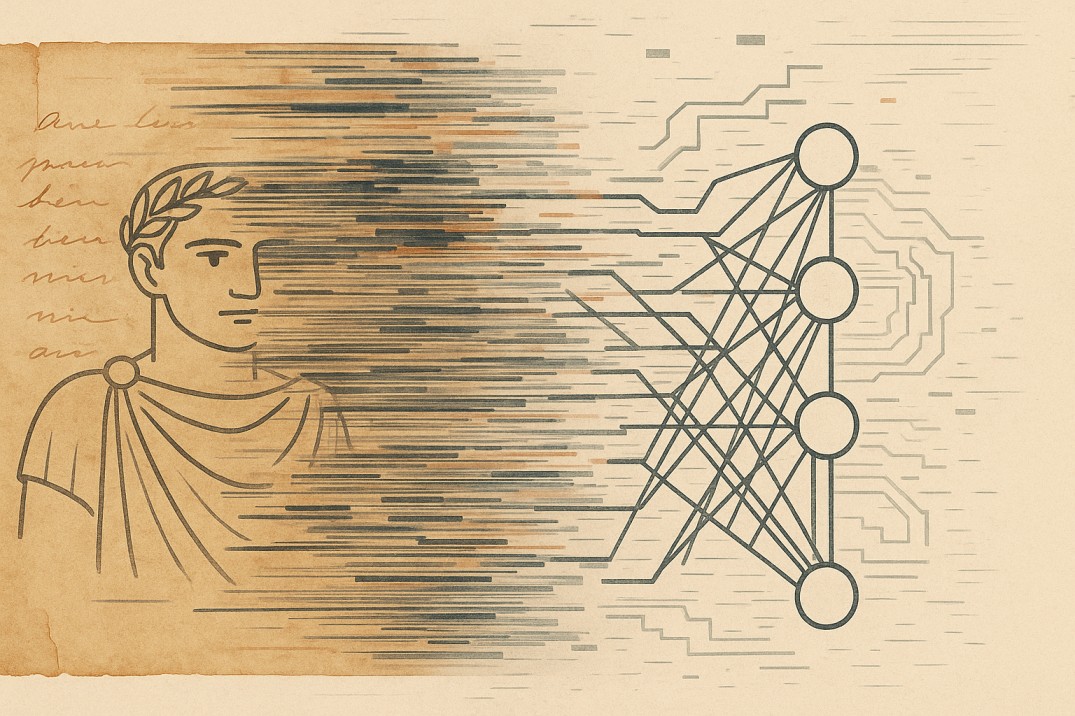Dead Kings Revived Via AI
When it comes to dead kings and lost empires, it’s very easy to circle back to England—the land of old, where such kings as King Henry the Eighth and the legend of King Arthur lived, where books like Game of Thrones have been adapted to preserve history by what we could find, limited by resources and human functionality.
But what if I was to tell you... there was a whole kingdom just as prevalent, filled with kings, legends of old, usurpers, taxes, and double-crossing? Being uncovered by AI at this very moment, in the historical documents preserved by South Korea. It is the Joseon Dynasty, which ruled Korea with kings for over five hundred years.
For decades, scholars devoted their lives to uncovering the secrets of these forgotten kings. Now, anyone who has been knows how easy it is to fall in love with the culture, the cuisine, and the people—but under all that lies a rich past, fought with medieval battles and a longing for peace.
AI Preserving History Through Language
Now, AI is doing what historians once did—preserving the record—by using the latest AI technology built on the powerful learning model known as Transformer architecture.
AI researchers and engineers have begun developing a Multilingual Neural Machine Translation system, otherwise known as MNMT, to decipher ancient texts. These systems train on three languages at once: the original ancient script (Hanja), Old Korean, and modern tongues. When full translations don’t exist, AI fills in the gaps—drawing on pattern recognition across massive datasets, from Chinese character structures to Korean syntax.
What would take scholars decades is being decoded in months. The ministers and scribes dedicated their lives to writing everything down, including one such story found through research: King Taejong fell off his horse and, embarrassed, pleaded with the historian not to write it down. As clinical proof of their invaluable insight, the minister-historian wrote The Accident and The King’s Plea—holding tight to the integrity of unknown history.
AI Decoding What Scholars Couldn’t
But now, with machines, we are decoding texts that, for decades, scholars spent their lives chipping away at—only to be met with impossible obstacles: overwhelming cost, decades-long timelines, and the sheer weight of unreadable history. The decoding AI It’s not perfect—but it’s fast, relentless, and self-teaching. AI is learning to speak in dead languages.
And in doing so, it’s rebirthing South Korea’s ancient past—giving us a once-in-a-lifetime insight into dead kings. But the Joseon Dynasty isn’t the only ancient voice AI is helping us hear.
In the deserts of Iraq and Syria, AI tools are being turned toward Akkadian cuneiform tablets—some of the oldest written records in human history. For centuries, their wedge-shaped script sat undeciphered. But now, with deep learning models trained on ancient Semitic languages, AI is beginning to read them fluently—revealing stories of gods, kings, and commoners we thought were gone forever.
Some of the Akkadian tablets tell of kings who weren’t just rulers—they were seen as divine. Chosen by gods like Marduk, crowned as the living or decades — for years—these tablets were damaged and incomplete. Just little pieces, unmatched symbols, whispers of ceremony with nobody to hold them or any accuracy. Only in myth and belief did we know of one of the first true empires. The cuneiform they used is next to impossible for researchers and scholars alike—trying to decipher a dead Semitic language that shifts form and meaning depending on the era, location, and whoever held the stylus to write it.
But now, using the latest deep learning machines built on this ancient code—AI systems like CDLI-100M—researchers are feeding in over 100,000 annotated cuneiform lines, plus linguistic data spanning from Hebrew, Arabic, and other Semitic tongues, to help predict missing lines, rebuild damaged texts, and spot the divine language buried in their patterns.
And bringing them back to be spoken in modern life. They’re putting together forgotten ceremonial phrases such as:
“He walked under the gaze of Marduk,”
“Crowned in the shadow of the heavens,”
“The god’s echo in mortal form.”
And bringing them back to be spoken in modern life. So what’s the takeaway?
That all kings fall off horses. That scribes don’t always listen.
That once, we spoke to gods in wedges of clay and performed vast ceremonies to be remembered.
And now, thanks to AI—to deep learning machines trained on silence and dust—we’re beginning to uncover it all.
And the truth is... we’re only at the beginning.






.jpg)


